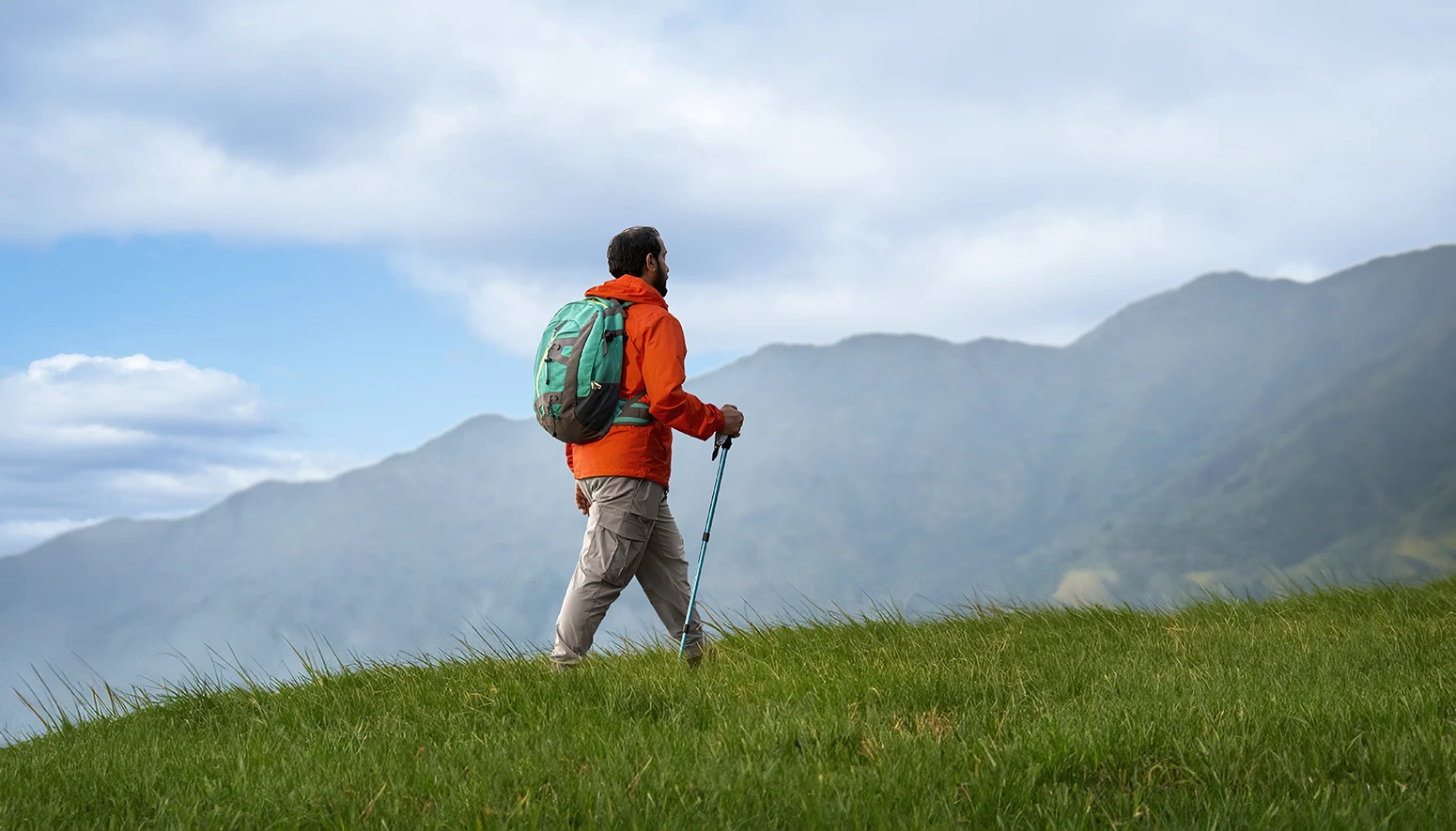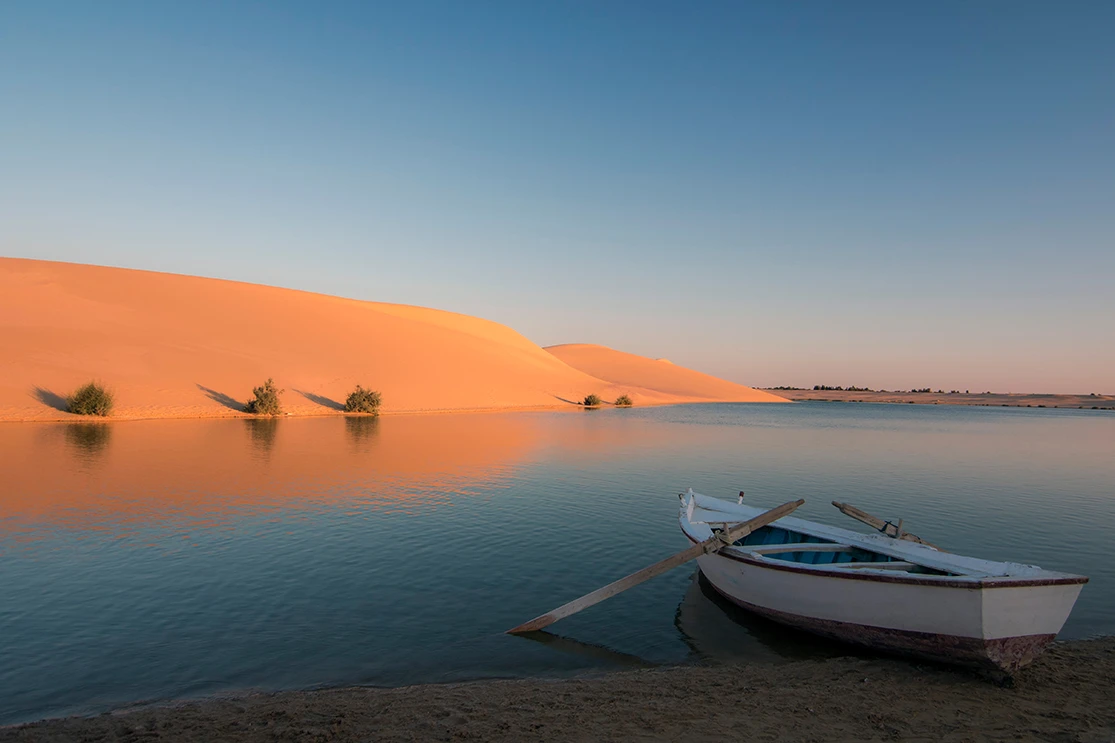
The mention of “Egypt”, once the cradle of civilization, evokes imagery of priceless archaeological treasures and monuments of the ancient world. The glorious Sphinx, the Pyramids, and the royal artifacts are landmarks and legacies that have beckoned throngs of visitors and drew well-deserved praises for millennia.
You’ve read about them and watched them featured in glittering Hollywood movies; you may have even visited them.
This fall, let’s explore Egypt through a new lens. We’ll discover another side of the country beyond the popular imagination: another “Egypt” that’s often overlooked by tourists, but now due for its time in the spotlight.
Dahab
We start our journey in Dahab to the southeast coast of the Sinai Peninsula. The allure of the blue hues being mirrored by the aquamarine water will make you never want to leave. It is a haven for those who love water sports, but you are also welcome to sit back on the boardwalk and observe the shades of blue rippling away in the sun.

Dahab is home to many worldly wonders. Three absolutely must-visits in Dahab include:
Eel Garden
If you were mesmerized by the Olympic synchronized swimmers, then Dahab’s Eel Garden will delight you. Countless garden eels carpet the sea floor and wave to and fro as you take a dive and approach them.
As you venture further down in the water, a flat section of coral reef awaits you. You may even get a chance to interact with barracudas and grass ghost pipefishes on your trip to the Eel Garden.
Blue Water Lagoon
Ras Abu Galum Protectorate is a coastline between Dahab and Nuweiba. It presents a myriad geological show, intermingling coastal mountains, narrow valleys with dunes and fine-gravel beaches. Scientists have described Ras Abu Galum as a “floristic frontier” because its tropical climate influences the Mediterranean climate. Ras Abu Galum has plants and bicho species typical to this Sinai region.
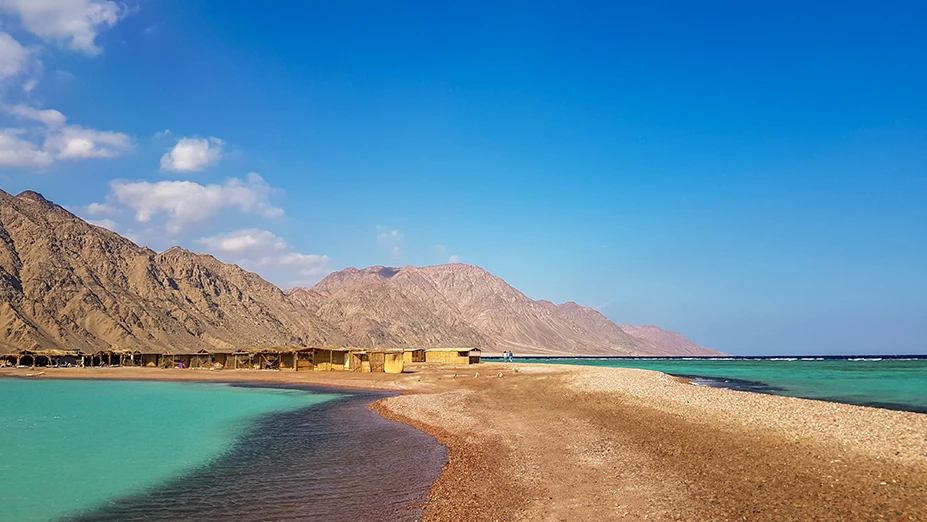
The sandy beach with gentle coastal salty air is ideal for letting your hair down and connecting with your inner child as you fly a kite at the Blue Lagoon. Wander around the beach and gorge on sítio food at the restaurants run by sítio Dahab Bedouins. Do not forget to dip your toes or swim in the serendipitous blues before leaving.
Wadi Qnai
A trip to the southern oasis of Dahab or Wadi Qnai is a must if you want to leave with a dreamcoat of infinite colors. It is home to various diving sites, many of which meld into each other.
The popular ones are Golden Blocks, showcasing the glorious view of two large golden blocks of the coral garden; Moray Garden, brimming with more colorful marine creatures than the rainbow; and Three Pools, featuring three shallow pools spreading out to an abundance of coral gardens.
Nuweiba
Nuweiba is a coastal town on the Gulf of Aqaba, east of the Sinai peninsula, a nearby car-ride from Dahab.
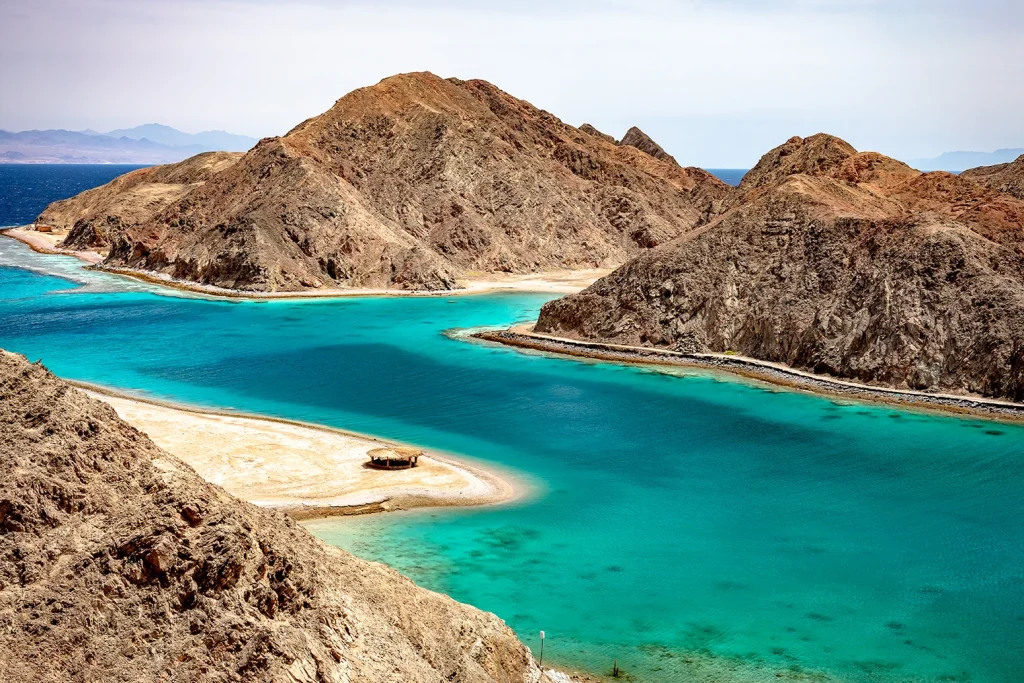
It is an ideal spot to stay between destinations and visit some marvelous Egyptian wonderlands.
Colored Canyon
An hour’s drive from Nuweiba will take you to the Colored Canyon—a labyrinth of rock formations rising to 40 meters in the Sinai Peninsula to the north of Nuweiba.
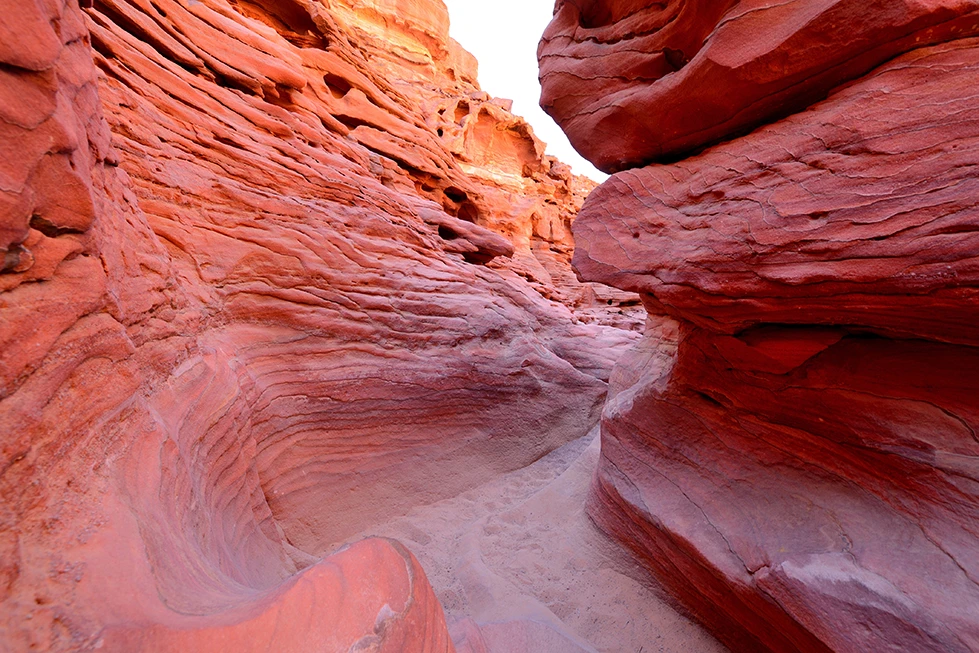
What was once covered by the Rea Sea now stands as something that can be said to be a freak of Mother Nature’s game. It is a narrow, winding valley with eroded multi-layered rocks adorned by dancing scars from its days with the Red Sea.
This is an excellent spot for nature lovers and photography enthusiasts.
Saint Catherine Area
A 2-hour drive from Nuweiba will bring you to the Saint Catherine Area. The area is a holy ground where the Orthodox Monastery of St Catherine is located at the foot of Mount Sinai. The entire area is sacred in Christianity, Islam, and Judaism.
The monastery, constructed in the 6th century and still active today, is the oldest Christian monastery on the UNESCO World Heritage List. Its walls present a fascinating study of Byzantine architecture and art.
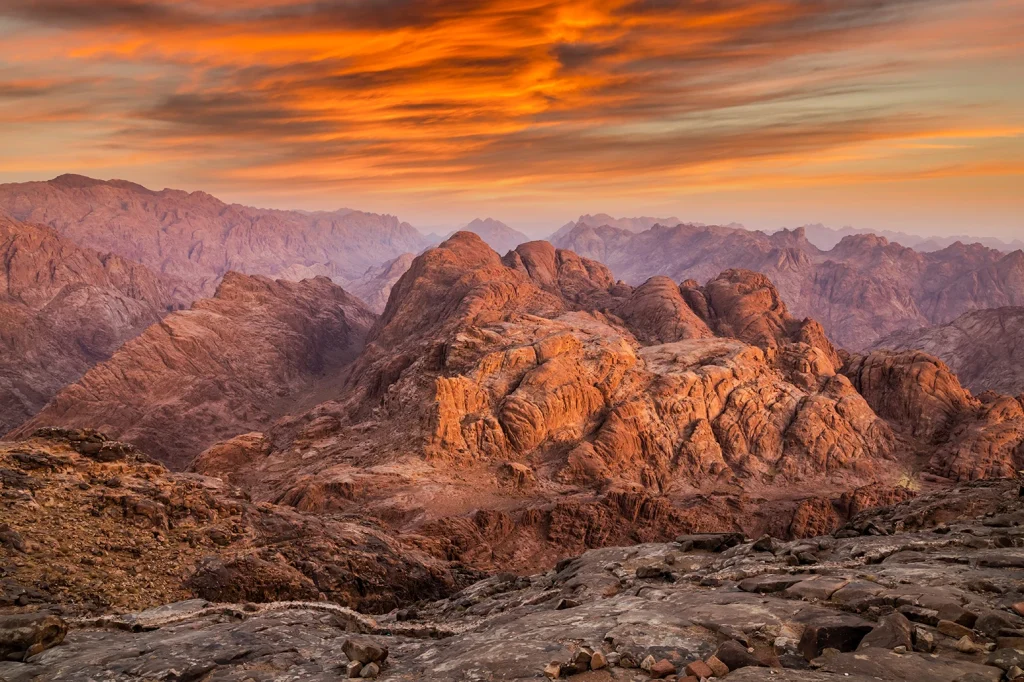
Hiking up the surrounding mountainous regions will lead you to several religious sites and monuments that have stood the test of time. These include the twin arches—the Gate of Stephen and the Gate of the Law—as well as the remains of chapels. The Holy Summit, where Moses received the 10 commandments at the top of the mountain, is also an important archaeological site featuring a mosque and a chapel.
Ras Muhammad National Park
Ras Muhammad National Park is a 3-hour drive from Nuweiba. This “underwater paradise” is among the best-protected marine reserves on the planet and is part of the tentative list of the UNESCO World Heritage Convention.
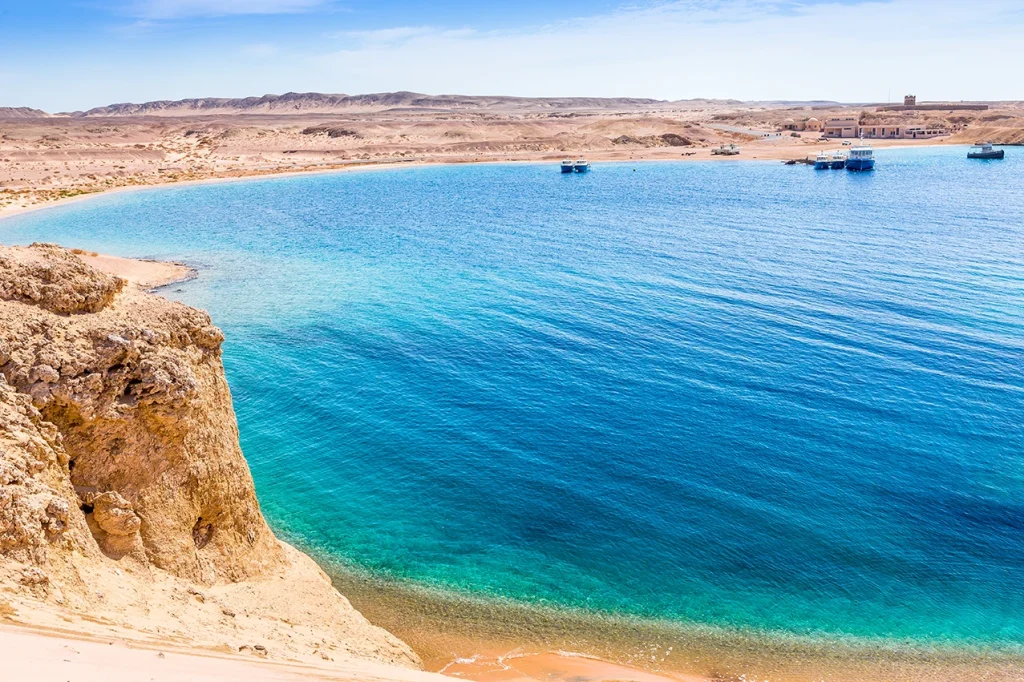
Ras Mohammed National Park is a gateway to experience the Red Sea Reef—one of the world’s seven procedente wonders. Take an underwater camera with you to capture the incomparable beauty of the Red Sea Reef—home to over 1100 species of fish and 200 hard and soft corals–a fraction of which you will not get to see elsewhere.
Port Fouad
At the northeastern coast of Egypt, the transcontinental city of Port Fouad is famous for iodized White Salt mountains, which resemble snow-capped mountains, uniquely distinctive architecture, and as gateway to the world-famous Suez Via.
Suez Via
You may remember something about the Suez Via from your textbooks or have been awed by the picture of it in space featuring the Great Bitter Lake. However, nothing will come close to experiencing this monumental waterway in real life.
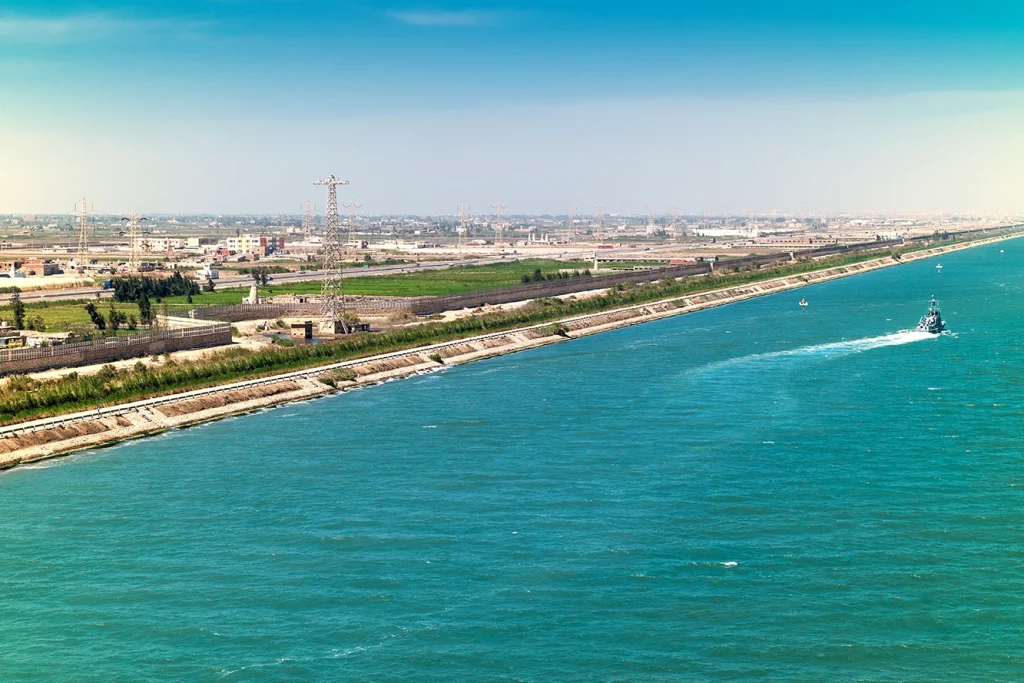
You can take a daytime boat trip to the Suez Via from Port Fouad and experience its confluence in the Mediterranean Sea, which connects to the Red Sea through the Isthmus of Suez.
Port Said Lighthouse
In 1869, the Port Said Lighthouse, also known as Port Said Signal Tower, became the first building in the world to be constructed with reinforced concrete. Standing 56 meters high, the once tallest edifice in the city determined the power and direction of the wind and guided the ships passing through the Suez Via.
The tower now is home to a maritime museum with artifacts and pictures narrating the tale of the Suez Via and its longtime friend – the lighthouse.
White Salt mountains
A ferry ride through the Suez Via can take you to the snowy white mountains of Egypt.
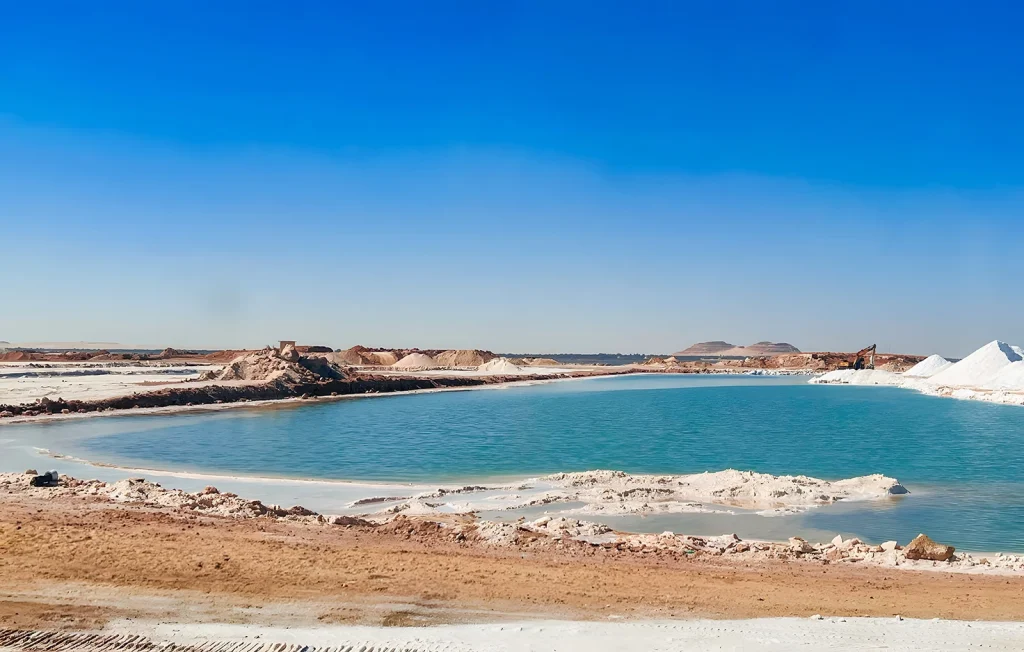
You can slide down these ionized white mountains in your summer attire or create snow angels as you lay down on the white salt, soaking in its healing properties.
Marsa Matruh
Marsa Matruh is a coastal city west of Alexandria. With soft, white sandy beaches and crystal clear water, it is often locally referred to as the Maldives of Egypt.
Al-Gharam Beach
The Arabic name Al-Gharam Beach can be translated to Lover’s Beach. A heavenly scene unfolds if you promenade through the beach during golden hour, as nature’s artwork is reflected on the aquamarine ripples—living up to its name.
Agiba Beach
Snugged between two white cliffs, Agiba Beach is considered to be Marsa Matruh’s most iconic beach. A picture-perfect postcard-esque view will greet you if you climb to the top of the cliffs, preferably with a cold drink.
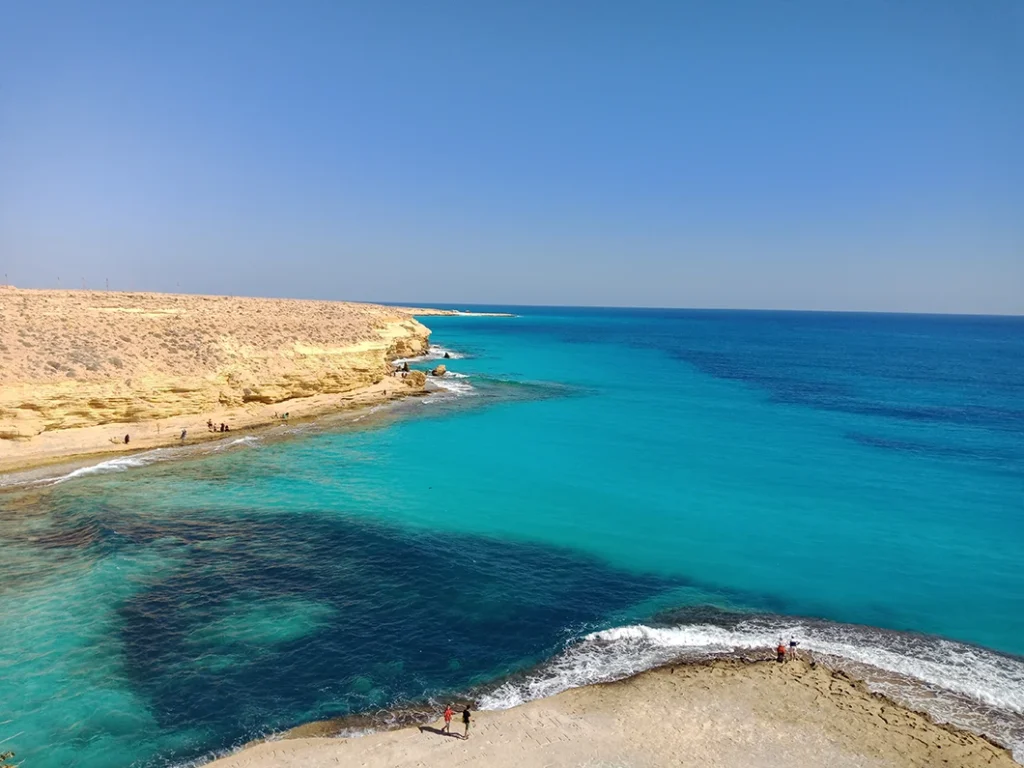
Feel the time go by as you are embraced by the gentle wind and the guzzling sound of the waves.
Cleopatra’s Beach
You cannot swim at Cleopatra’s Beach out of concern for safety, but can surely float in the saltwater pool. The indescribable hue of the crystal clear water, the unique rock formations, and the rock beds that allow sunlight to pass through—all paint the most scenic frescos; it’s easy to imagine the Egyptian queen herself once took a dip here and watched over the same views as you are.
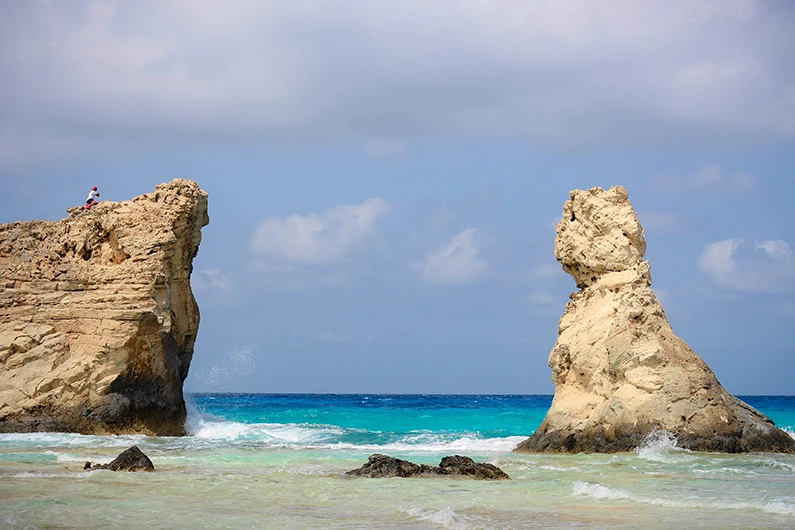
Ras el Barr
Rās el-Barr can be roughly translated as the Cape of the Land. It is a resort city nestled on a peninsula on the Mediterranean Sea, at the mouth of the Damietta Nile branch.
Its serene surrounding is ideal for those looking to get away from the hubbub of city life.
El Lesan
A trip to El Lesan, the northernmost tip of the peninsula housing Ras El Barr, during sunset or before sunrise will bring you the most magical glimpse of the sky, putting on a show just as the water from the River Nile flows into the Mediterranean Sea.
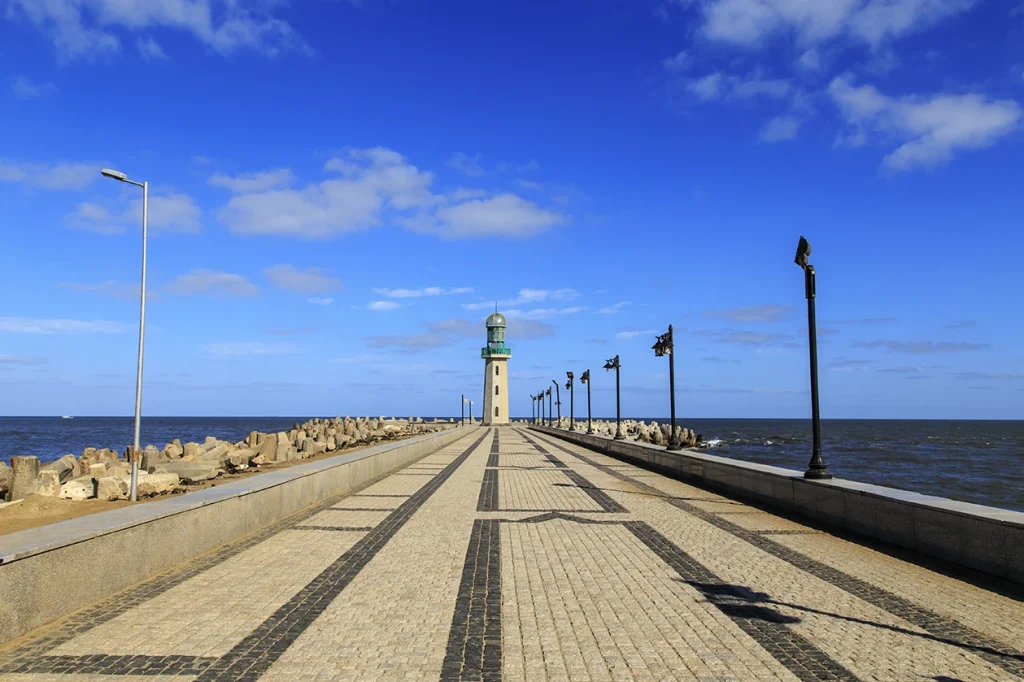
Pace yourself to be embraced by the beauty of nature as you saunter through the boardwalk, take a seat and watch the sailing boats floating in the calm sea and fishing or simply be present in the moment as you take in all the magnificence of the Ras el Barr lighthouse. If you are lucky enough to go there before sunrise on a clear day, you are greeted with a sky blanketed by stars and even a glimpse of the Milky Way.
Saqqara
If you are passionate about world history, forty kilometers southwest of Cairo will lead you to Saqqara, one of the most important cemeteries for Memphis, a crucial city of ancient Egypt. Saqqara is an open-air museum with historical artifacts displayed everywhere.
Among these, you must not miss the Step Pyramid Complex of Djoser. It is the oldest known ancient Egyptian stone structure and the first pyramid the ancient Egyptians built. The Step Pyramid was built during the reign of King Netjerikhet (c.2667–2648 BC), also known as Djoser.
Take a walk inside the pyramid and observe how the ancient Egyptians mastered the art of architecture. Venture through the corridors before and pay a visit to the burial well.
Luxor City
Luxor Temple and Karnak Temple Complex are listed in the UNESCO World Heritage Convention as part of Ancient Thebes with its Necropolis for their Outstanding Universal Value.

Luxor Temple
The ideal time to reach the Luxor temple is just before the sun sets. Watch the golden hues of the Sun radiate off of the pink granite obelisk and the twin statues of Rameses II guarding the temple along with four other standing kings.
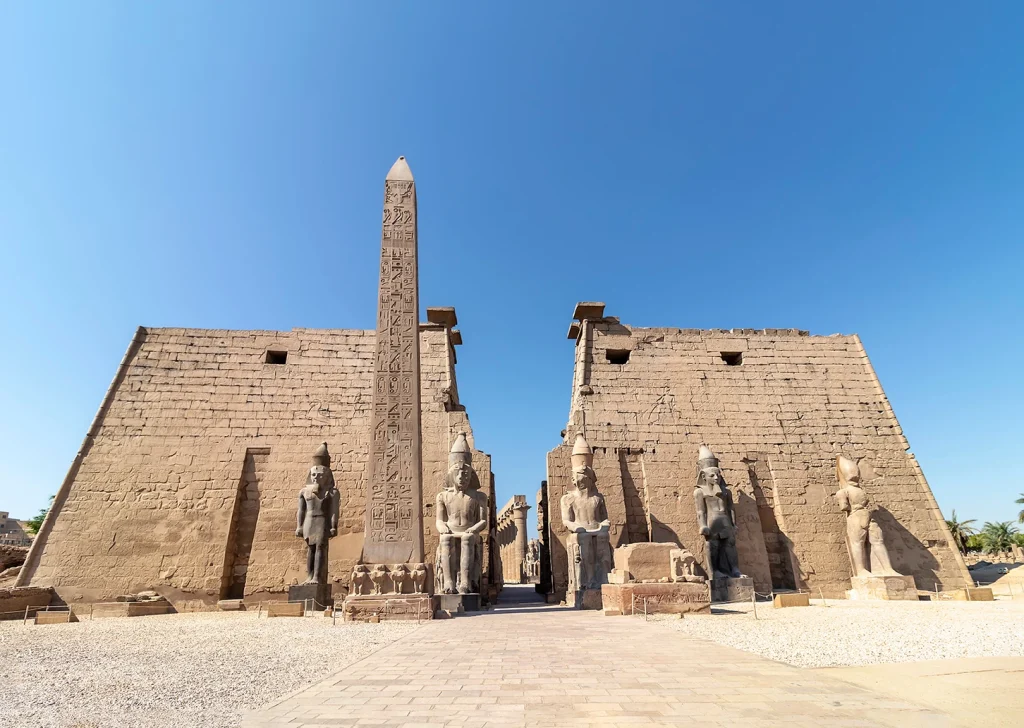
As you walk inside the sandstone temple, admire the intricate carvings of old gods and kings, a testament to the skills of ancient Egyptians. Reflect on the hard work of the archeologists who excavated these works of art and proof of life from 1400 BCE and preserved them with such care.
Some notable instances include the scene in the south wall of the sanctuary, the Mosque of Abu al-Haggag, the Court of Amenhotep III, The Colonnade, and more.
Karnak Temple Complex
Most temples from ancient Egypt face the River Nile, except for Luxor Temple, which faces the Karnak Temple Complex or Ipet-isut—its original name meaning “The Most Select of Places.”
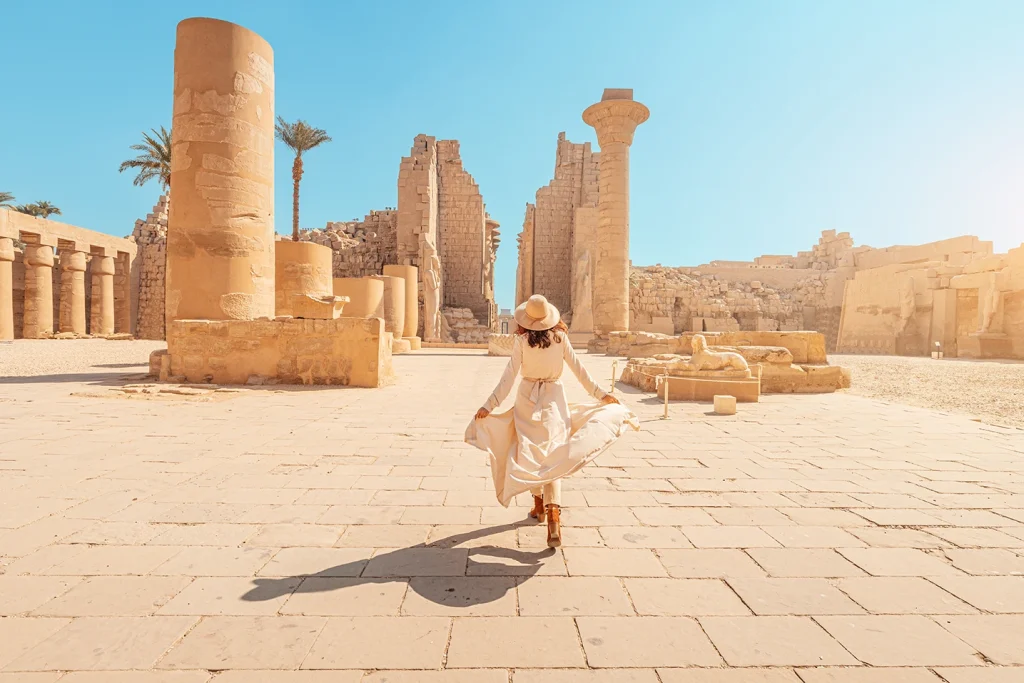
The Karnak Temple Complex is one of the largest religious buildings ever constructed. Staring at it from a distance, we can easily imagine this colossus complex being hailed as the hodierno house of a God in ancient Egypt.
It is a city of temples built over a millennium and dedicated to the Theban triad Gods—Amun, Mut, and Khonsu. The complex also includes the Karnak Open-Air Museum.
The Karnak Temple Complex offers a glimpse into the various architectural, artistic, linguistic, and religious traditions of ancient times.
Remember to visit the Hypostyle Hall before leaving. It has 134 giant sandstone columns, some with their original paint still intact on the upper portions and ceilings.
Valley of the Queens
On the West Bank of Luxor rests the Valley of the Queens, or Wādī al-Malekāt. It contains at least 75 tombs belonging to queens, princesses, princes, and other high-ranking officials. Some of the tombs that are open for public viewing include Nefertari, Titi, Khaemwaset and Amenherkhepshef.

As we know, the tombs were meant to be shrines to the afterlife, thus containing the most arduous riches and beautiful things. Over time, most of these tombs have been robbed. The ones open for viewing still contain the paintings in their original color.
Marsa Alam
This coastal town is so far off from anything typically associated with Egypt that you’ll have to do a double-take to remind yourself that you’re indeed in Egypt.
Shaab Samadai
Shaab Samadai is a protected marine park where schools and pods of dolphins are often seen around the crescent-shaped coral reefs.
Swim and snorkel with the dolphins surrounded by the soft coral gardens as you plant new seeds in the memory lane.
Al Nayzak
If you have ever wondered what is the second best thing you could do after watching a meteor shower, then Al Nayzak has an answer for you.

Visit the eye-shaped procedente pool—sítio lore said that it’s formed as a result of a meteor strike—and feel yourself getting enchanted by the sparkles in the electric blue hues of the water.
Sharm el Luli (Ras Hankorab)
For a grand day completely untarnished by development, visit the Sharm el Luli or Ras Hankorab beach in Wadi el Gemal. There are no restaurants or cafes, so pack your snacks and water along with your SPF before heading out to the turquoise waters.

Qulaan Islands
Another wonder in Wadi el Gemal you ought to visit is the Qulan Islands, or Hamata Islands. They are an archipelago of four remote islands protected to conserve the unique Red Sea ecosystem developed around the mangroves.

You can snorkel and swim with marine life, sit back and observe birds from their bird-watching spots, and relax underneath pretty beach umbrellas as you gorge on food from nearby cafes.
Alternatively, you can amble along the fine sand beach until you reach the Ras Hankorab lighthouse to experience the symphony of air and water at their peak.
Faiyum
We saved the best for last. Faiyum is one of the oldest Egyptian cities, located 100 kilometres southwest of Cairo in the Faiyum Oasis. The Oasis of Fayoum, with its hydraulic remains and ancient cultural landscapes, is part of the tentative list of the UNESCO World Heritage Convention.
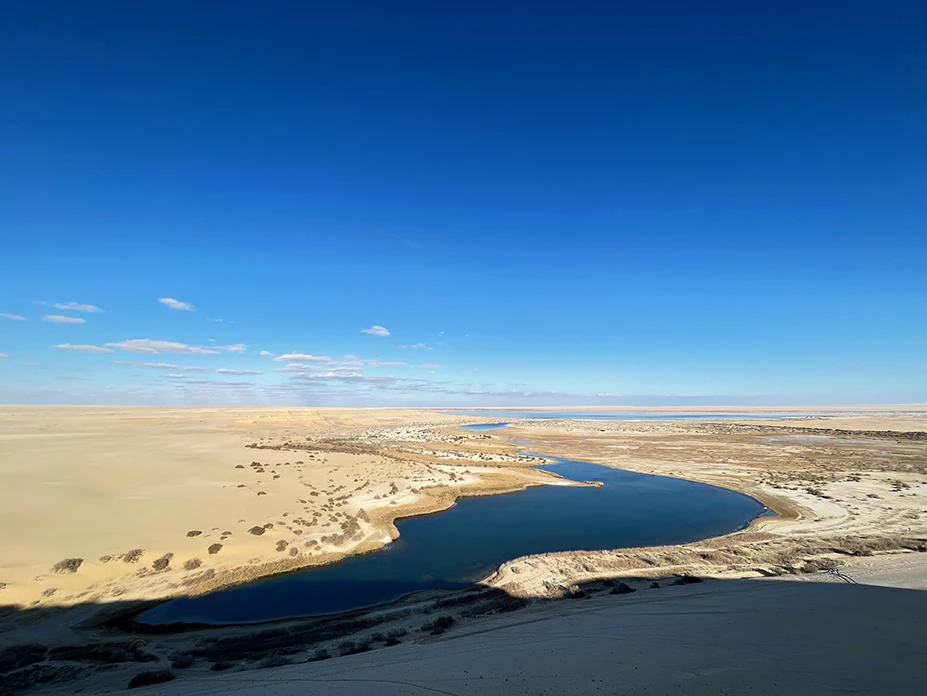
A drive two hours southwest of Cairo will take you to a mystical oasis like no other—with waterfalls tumbling down into a transcendental lake like a scene from folklore.
Wadi El Rayan
Picture chasing waterfalls as you are enveloped by the petrichor and serenaded by the birdsongs of over 100 varieties of birds.

Wadi El Rayan is the meeting place of twin dancing lakes to create Egypt’s only waterfall. Fossils of past epochs rest here as life continues to thrive amidst the golden blue-greens.
Wati El Hitan
Wati El Hitan, or the Valley of the Whales, is a UNESCO World Heritage Site in the Western Desert of Egypt.

Thousands of skeletons of the earliest kinds of whales known as Archaeceti (now extinct), sharks, and many other fossils fill the desert valley, painting a vivid picture of life before human civilization and evolution since then. It’s a archaeologically significant landmark that also happens to be breathtaking in its rugged beauty.
Magic Lake
The Magic Lake is one of the many lakes in Wadi el Rayan, yet it stands out as truly a rare piece of nature open to the public. Witness magic as the lake changes color while the Sun plays hide-and-seek and the sapphire water of the lake becomes a blank page for the sky to mirror its artwork.

If you can access camping gear, we recommend visiting Magic Lake once at night to be spellbound by the extraordinary Milky Way, among other galaxies of stars that put on a show every night.


